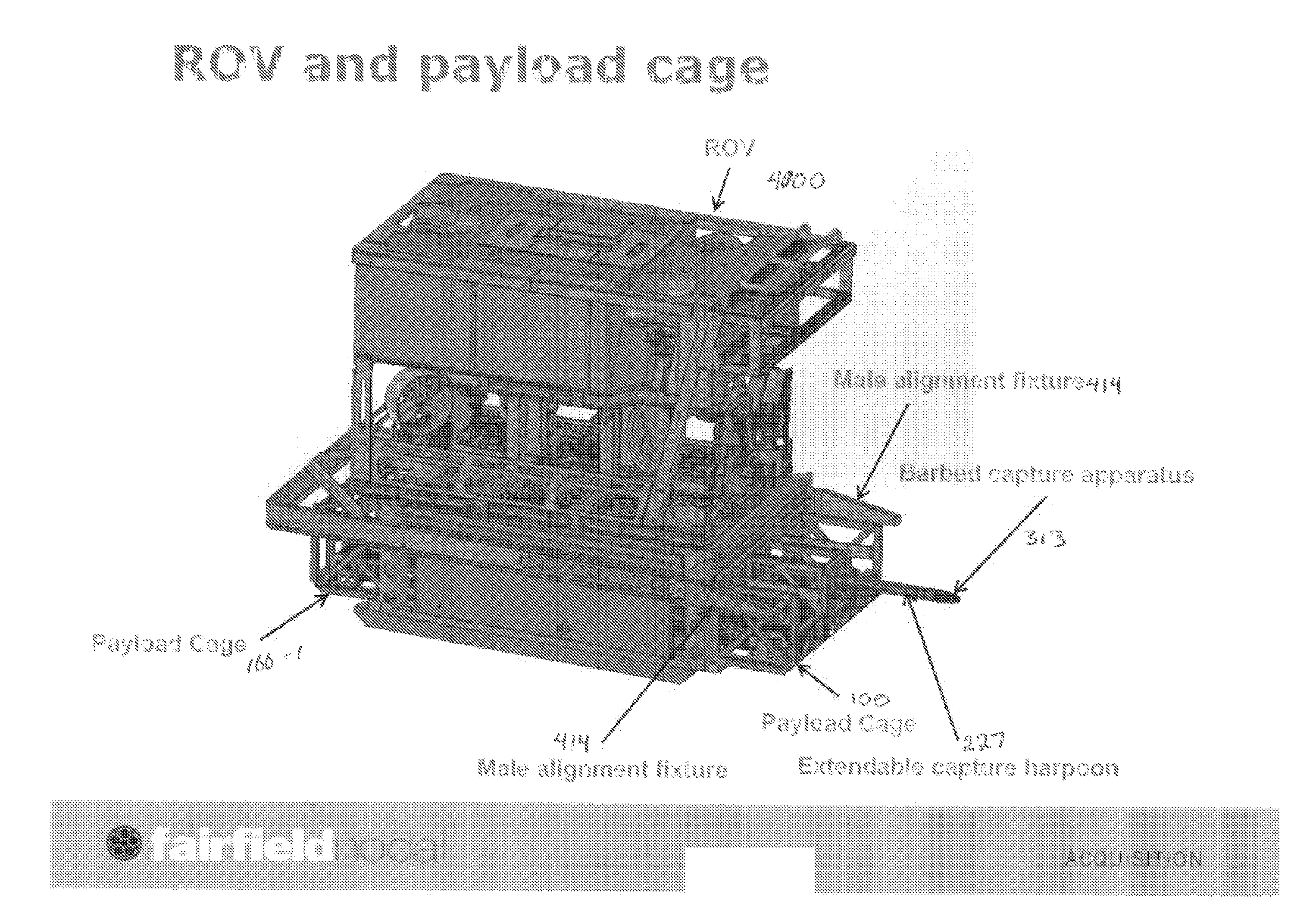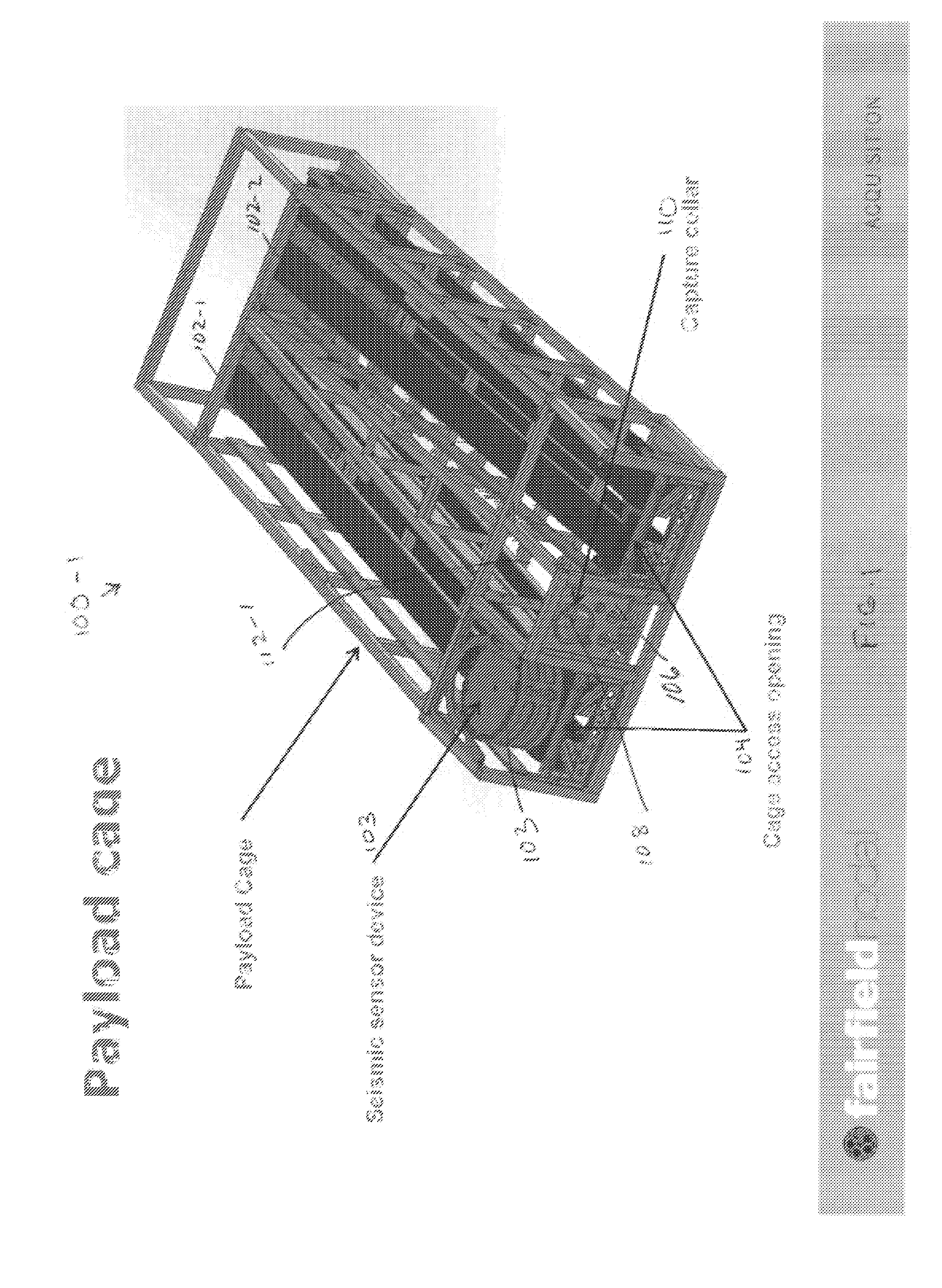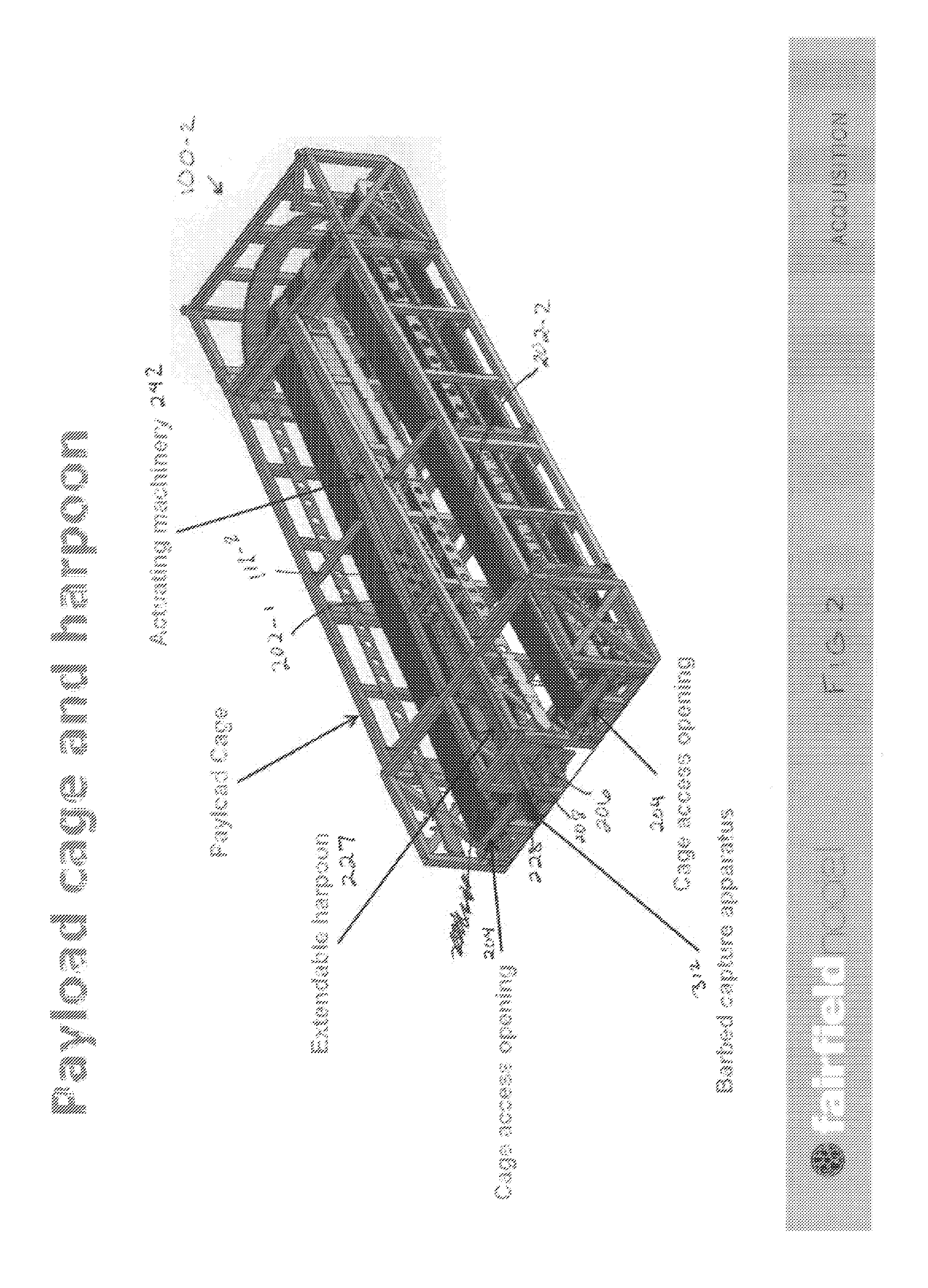Capture and docking apparatus, method, and applications
a technology of capture and docking, applied in the field of equipment handling in an unstable medium, can solve the problems of increasing costs, exceedingly expensive operations, and exceedingly high costs of ocean bottom recording
- Summary
- Abstract
- Description
- Claims
- Application Information
AI Technical Summary
Benefits of technology
Problems solved by technology
Method used
Image
Examples
Embodiment Construction
[0052]Embodiments of the invention relate to capturing, docking, and releasing at least two in-transit, relatively massive, inter-connecting payload platforms (e.g., ‘suspended machinery’ and ‘ROV’) disposed in a water column at depths up to or exceeding several thousand feet, and effecting operational deployment, including capturing, loading, holding, releasing, discharging, unloading, reloading, transferring, and / or other controlled management and / or manipulation of an identified payload (e.g., payload cage(s) or unit payloads such as ‘nodes’ or ocean bottom sensors (OBSs)) between the payload platforms.
[0053]Generally speaking, suspended machinery will be disposed in a mid-water column via a cable sourced from a surface vessel. The suspended machinery will include either a dedicated payload cage that stays with the suspended machinery and contains unit payloads (hereinafter, ‘nodes’), which can be received into, held by, and discharged from the payload cage or, a modular payload ...
PUM
 Login to View More
Login to View More Abstract
Description
Claims
Application Information
 Login to View More
Login to View More - R&D
- Intellectual Property
- Life Sciences
- Materials
- Tech Scout
- Unparalleled Data Quality
- Higher Quality Content
- 60% Fewer Hallucinations
Browse by: Latest US Patents, China's latest patents, Technical Efficacy Thesaurus, Application Domain, Technology Topic, Popular Technical Reports.
© 2025 PatSnap. All rights reserved.Legal|Privacy policy|Modern Slavery Act Transparency Statement|Sitemap|About US| Contact US: help@patsnap.com



